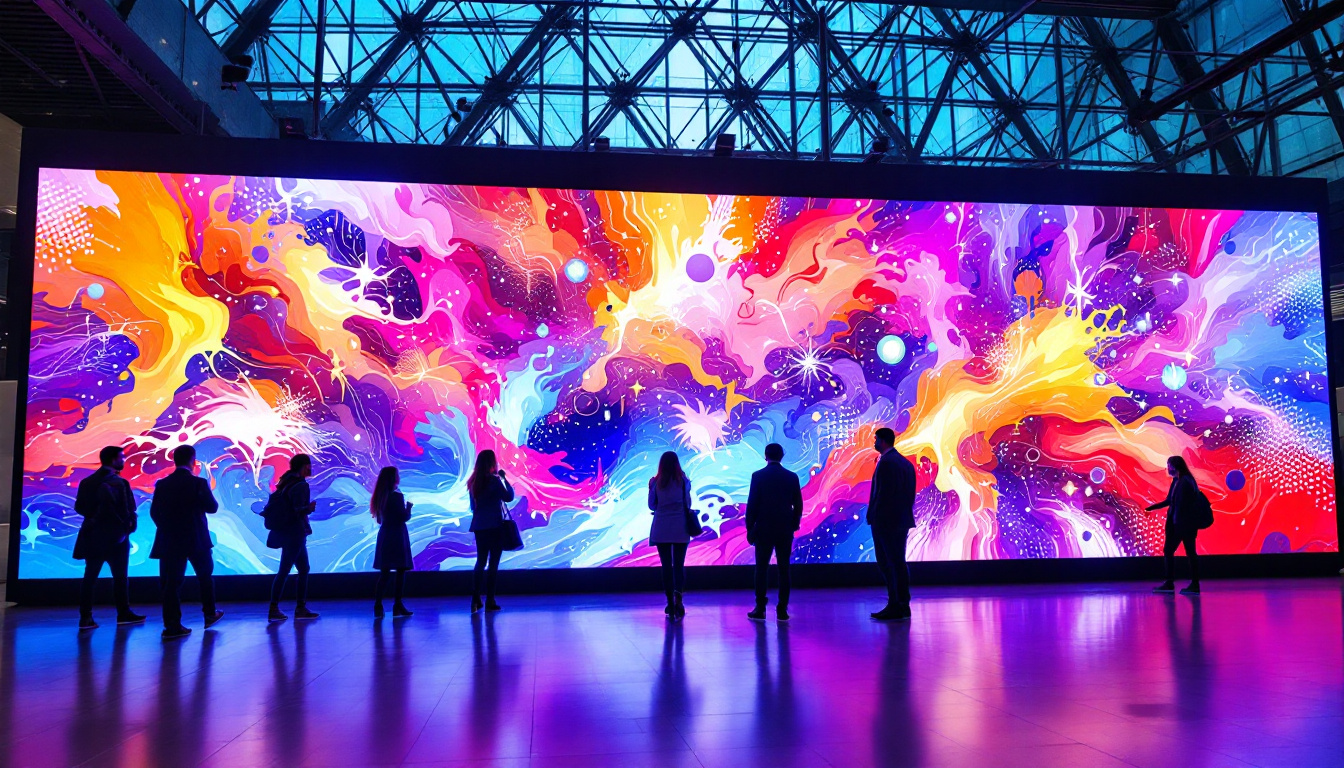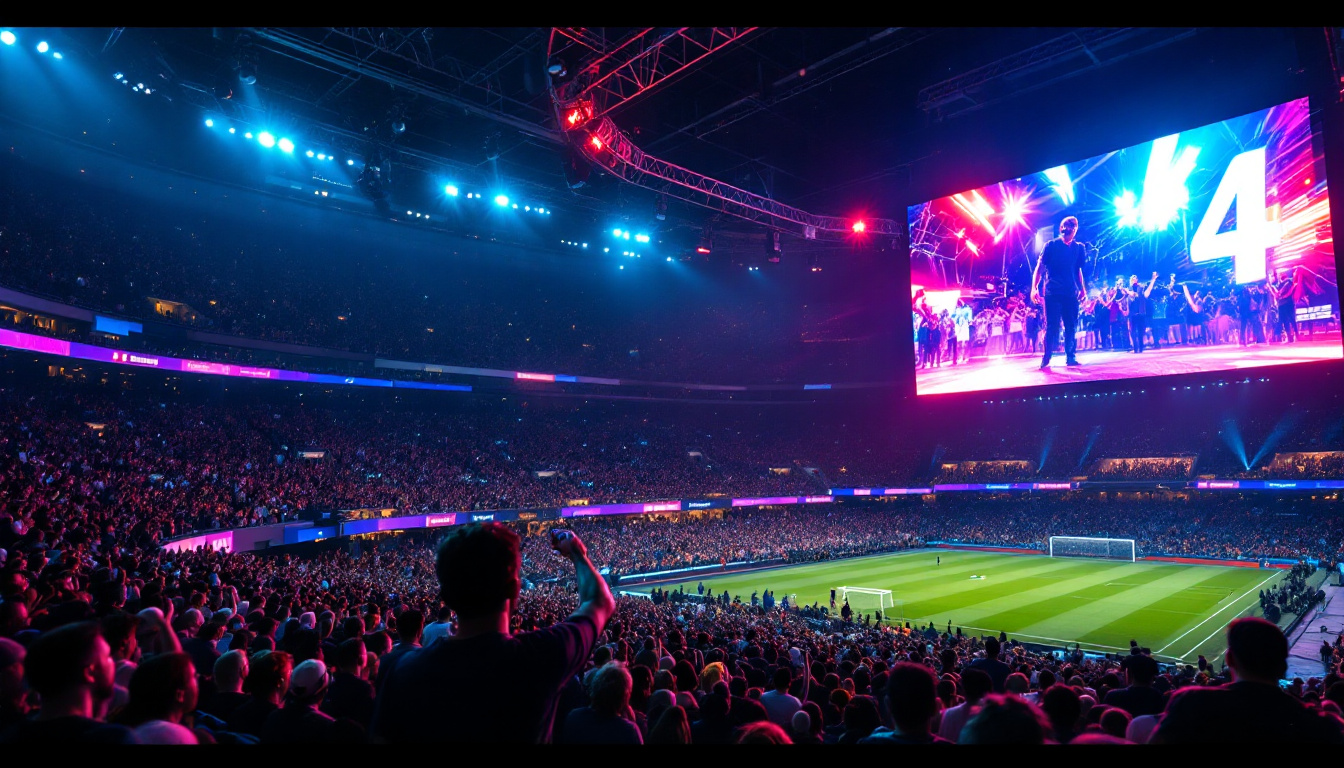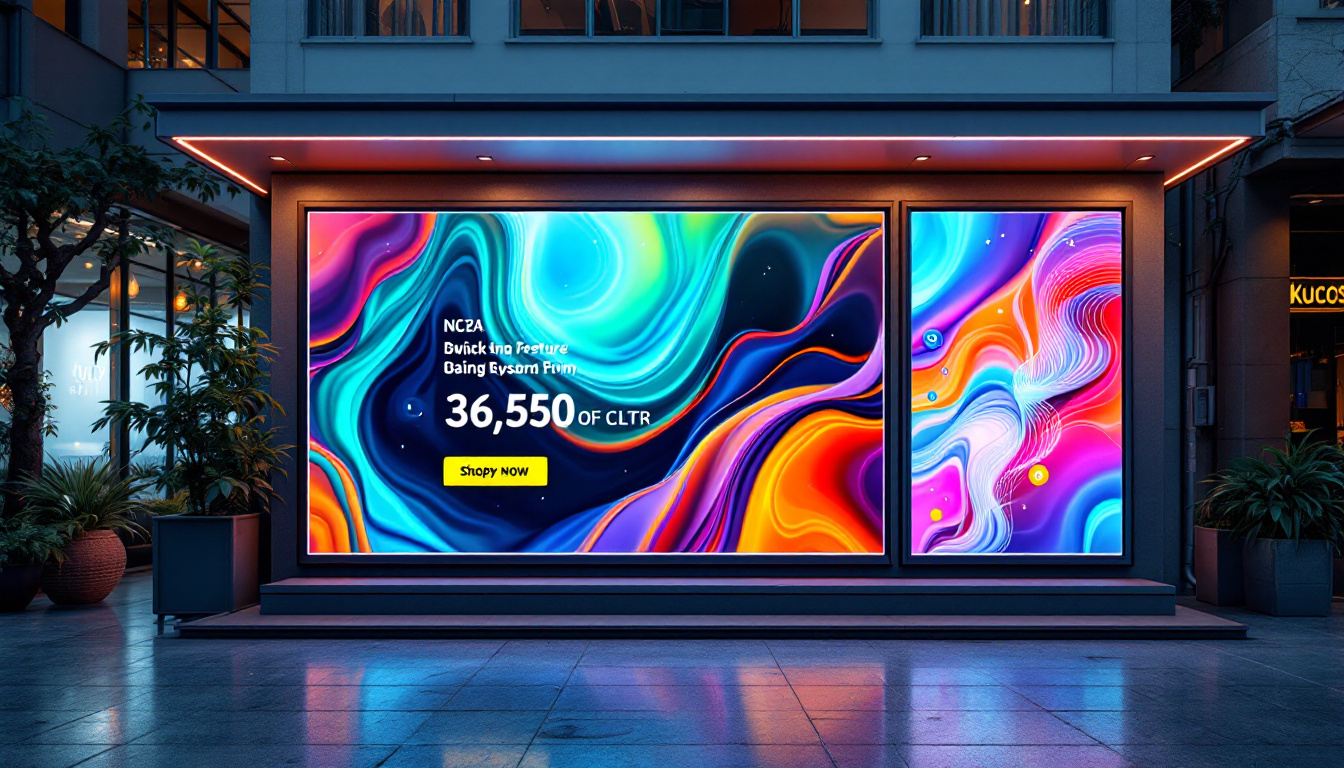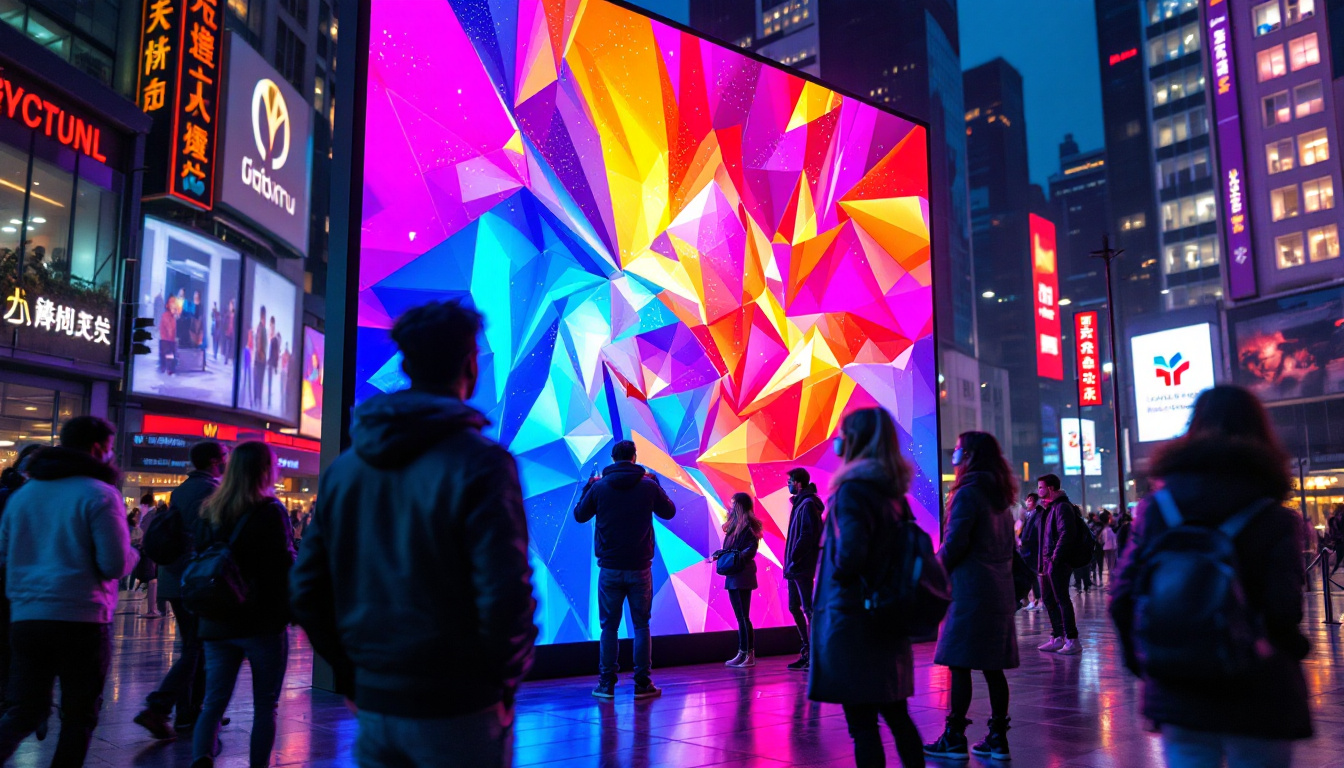In today’s fast-paced digital world, businesses and organizations are constantly seeking innovative ways to engage their audiences. One of the most effective methods to achieve this is through interactive digital signage. This technology, particularly when paired with LED displays, offers a dynamic platform for communication, advertising, and information dissemination. This article delves into the intricacies of interactive digital signage software and the role of LED displays in enhancing user experience.
Understanding Interactive Digital Signage
Interactive digital signage refers to electronic displays that allow users to engage with content in real time. Unlike traditional signage, which merely conveys information passively, interactive displays invite users to participate, creating a two-way communication channel. This interactivity can take various forms, including touch screens, motion sensors, and mobile device integration. The ability to engage users actively not only enhances their experience but also significantly increases retention of the information presented, making it a powerful tool for marketers and educators alike.
The Evolution of Digital Signage
Digital signage has come a long way since its inception. Initially, it was limited to simple displays showcasing static images or text. However, advancements in technology have transformed digital signage into a versatile tool that can incorporate video, animations, and real-time data. The introduction of interactive elements has further revolutionized the field, enabling businesses to create immersive experiences that capture attention and foster engagement. As technology continues to evolve, we see the integration of artificial intelligence and machine learning, allowing for even more personalized and adaptive content delivery based on user preferences and behaviors.
As the demand for personalized content grows, interactive digital signage has become increasingly popular across various sectors, including retail, education, healthcare, and transportation. This evolution reflects a broader trend towards digital transformation, where organizations leverage technology to enhance customer experiences and streamline operations. For instance, in retail environments, interactive displays can guide customers through product selections, provide detailed information, and even facilitate purchases, all while gathering data on customer preferences and behaviors for future marketing strategies.
Key Features of Interactive Digital Signage Software
Interactive digital signage software comes equipped with a myriad of features designed to enhance user engagement. Some of the most notable features include:
- Content Management: Users can easily create, schedule, and update content remotely, ensuring that displays always feature the latest information.
- Interactivity: Touch screens and gesture recognition allow users to interact with the content, making the experience more engaging.
- Analytics: Many software solutions offer analytics tools that track user interactions, providing valuable insights into audience behavior. These insights can help businesses tailor their offerings and improve overall customer satisfaction.
- Multi-Platform Support: Compatibility with various devices and operating systems ensures that content can be displayed seamlessly across different platforms.
Moreover, the integration of cloud-based solutions allows for real-time updates and remote management, making it easier for businesses to adapt their messaging on-the-fly based on current events or promotions. This flexibility is particularly beneficial in fast-paced environments, where timely information can significantly impact customer decisions. Additionally, many interactive digital signage solutions now incorporate social media feeds, allowing organizations to display user-generated content and foster a sense of community among their audience, further enhancing engagement and interaction.
The Role of LED Displays in Digital Signage
LED displays have emerged as a preferred choice for digital signage due to their vibrant colors, high brightness, and versatility. These displays can be used in various environments, from indoor retail spaces to outdoor billboards, making them an invaluable asset for businesses looking to maximize their visibility.
Advantages of LED Displays
LED technology offers several advantages over traditional display options, such as LCD or projection systems. Some of the key benefits include:
- Brightness and Clarity: LED displays are known for their exceptional brightness, making them easily viewable in direct sunlight. This feature is particularly beneficial for outdoor advertising.
- Energy Efficiency: LED technology consumes less power compared to traditional displays, resulting in lower energy costs and a reduced environmental impact.
- Longevity: LED displays have a longer lifespan, often lasting up to 100,000 hours, which translates to lower maintenance and replacement costs over time.
- Flexibility in Design: LED displays can be manufactured in various shapes and sizes, allowing for creative installations that can adapt to different spaces.
Types of LED Displays
There are several types of LED displays available, each designed to meet specific needs and applications. Understanding these types can help businesses choose the right solution for their digital signage requirements:
- Indoor LED Displays: These displays are typically used in retail environments, corporate settings, and event venues. They offer high resolution and are designed for close viewing distances.
- Outdoor LED Displays: Built to withstand the elements, outdoor LED displays are used for billboards and large-scale advertising. They are designed for maximum brightness and visibility.
- Transparent LED Displays: These innovative displays allow for a see-through effect, making them ideal for retail windows and exhibitions. They provide a unique way to showcase products while maintaining visibility.
Integrating Interactive Digital Signage with LED Displays
The combination of interactive digital signage software and LED displays creates a powerful tool for businesses. This integration allows for engaging content that not only attracts attention but also encourages user participation. Businesses can leverage this technology to enhance customer experiences, drive sales, and convey important information effectively.
Enhancing Customer Engagement
Interactive LED displays can transform the way businesses interact with their customers. By incorporating touch screens or gesture-based controls, customers can explore products, access information, and even make purchases directly from the display. This level of engagement can lead to increased foot traffic, higher conversion rates, and improved customer satisfaction.
For example, in a retail setting, an interactive LED display could allow customers to browse through a catalog of products, view promotional videos, or even access loyalty programs. This not only enriches the shopping experience but also provides valuable data on customer preferences and behaviors.
Real-Time Content Updates
One of the standout features of interactive digital signage software is the ability to update content in real time. This capability is particularly beneficial for businesses that need to communicate timely information, such as promotions, events, or emergency announcements.
For instance, a restaurant can use interactive LED displays to showcase daily specials or updates on wait times, enhancing the overall dining experience. Similarly, transportation hubs can provide real-time updates on schedules and delays, improving passenger communication and satisfaction.
Challenges and Considerations
While the benefits of interactive digital signage and LED displays are significant, there are also challenges that businesses must consider. Understanding these challenges can help organizations make informed decisions when implementing this technology.
Cost Implications
The initial investment in interactive digital signage and LED displays can be substantial. Businesses must consider not only the cost of the hardware but also the software, installation, and ongoing maintenance. However, many organizations find that the long-term benefits, such as increased engagement and sales, outweigh these upfront costs.
Content Creation and Management
Creating engaging content for interactive displays requires a strategic approach. Businesses must invest time and resources into developing high-quality visuals and interactive elements that resonate with their target audience. Additionally, ongoing content management is crucial to ensure that displays remain relevant and effective.
Organizations may choose to hire in-house teams or partner with external agencies to develop and manage content. This decision should be based on the organization’s capabilities and budget.
Future Trends in Interactive Digital Signage
The landscape of interactive digital signage is continually evolving, driven by technological advancements and changing consumer behaviors. Keeping an eye on emerging trends can help businesses stay ahead of the curve and maximize their investment in this technology.
Artificial Intelligence and Personalization
As artificial intelligence (AI) technologies advance, businesses are increasingly using AI to personalize content for their audiences. Interactive digital signage can leverage AI algorithms to analyze user behavior and preferences, delivering tailored content that resonates with individual customers.
This level of personalization can significantly enhance user engagement and drive conversions, as customers are more likely to respond positively to content that aligns with their interests and needs.
Augmented Reality Integration
Augmented reality (AR) is another trend gaining traction in the realm of interactive digital signage. By integrating AR with LED displays, businesses can create immersive experiences that blend the digital and physical worlds. For example, a furniture retailer could allow customers to visualize how a piece of furniture would look in their home through an interactive display.
This innovative approach not only captivates audiences but also provides practical solutions that enhance the shopping experience.
Conclusion
Interactive digital signage software, when combined with LED displays, offers a powerful solution for businesses looking to engage their audiences effectively. The ability to create dynamic, interactive experiences can drive customer engagement, enhance communication, and ultimately lead to increased sales.
While challenges such as cost and content management exist, the long-term benefits of this technology far outweigh these concerns. As trends like AI personalization and AR integration continue to shape the future of digital signage, organizations that embrace these innovations will be well-positioned to thrive in an increasingly competitive landscape.
In summary, investing in interactive digital signage and LED displays is not just about keeping up with technology; it’s about creating meaningful connections with audiences and delivering experiences that resonate. As businesses navigate this digital transformation, the potential for growth and engagement is limitless.
Discover LumenMatrix’s Innovative LED Solutions
Ready to elevate your audience engagement to new heights? Explore LumenMatrix’s comprehensive range of LED display solutions, designed to bring your digital signage to life. From vibrant Indoor LED Walls to robust Outdoor displays, and from sleek LED Posters to immersive Floor LED Displays, LumenMatrix has the cutting-edge technology to transform your visual communication. Embrace the future with our Custom, All-in-One, and Transparent LED Displays, and let your brand shine. Check out LumenMatrix LED Display Solutions today and start creating unforgettable experiences that resonate with your audience.































